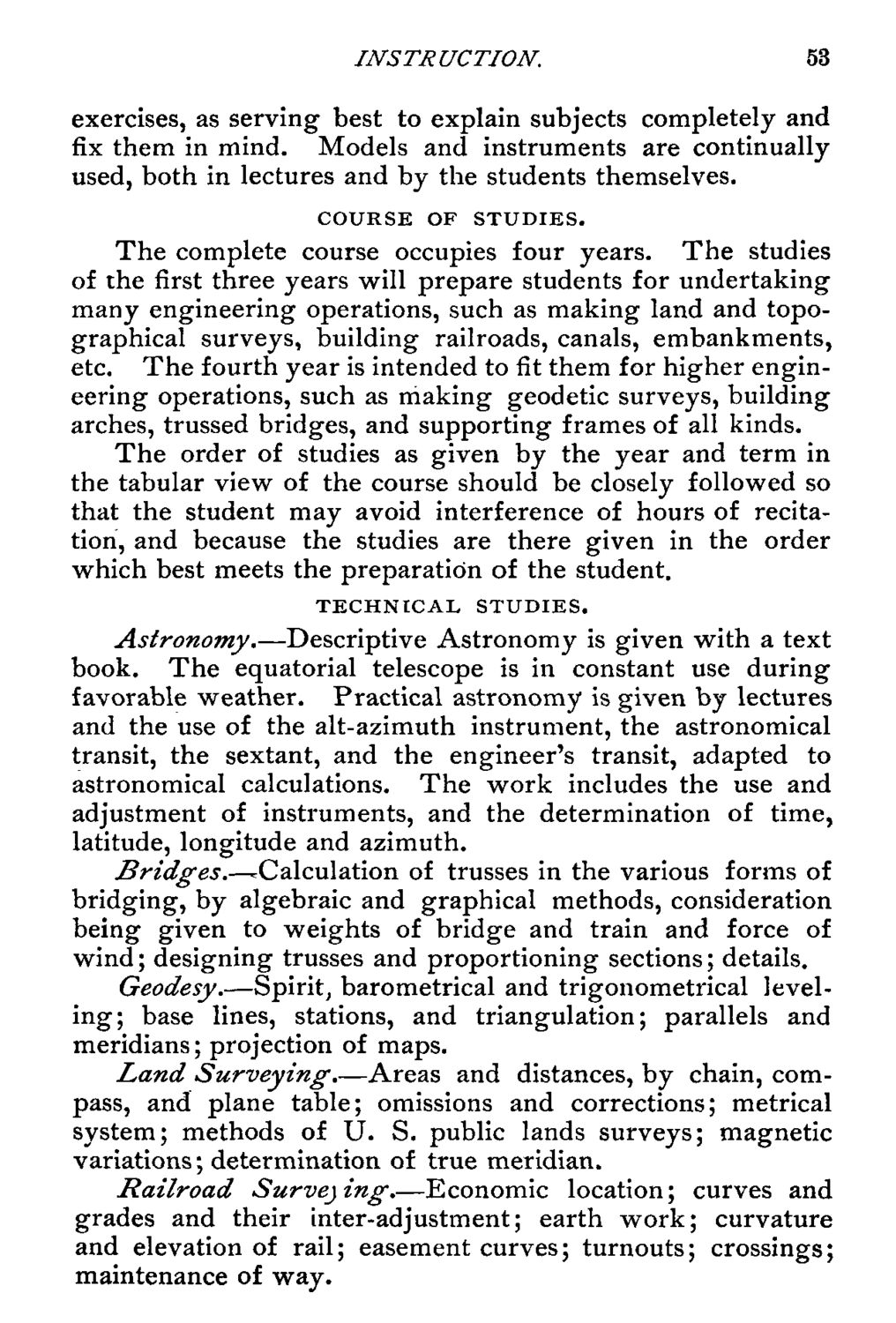| |
| |
Caption: Course Catalog - 1887-1888
This is a reduced-resolution page image for fast online browsing.

EXTRACTED TEXT FROM PAGE:
INSTRUCTION. 53 exercises, as serving best to explain subjects completely and fix them in mind. Models and instruments are continuallyused, both in lectures and by the students themselves. COURSE OF STUDIES. The complete course occupies four years. The studies of the first three years will prepare students for undertaking many engineering operations, such as making land and topographical surveys, building railroads, canals, embankments, etc. The fourth year is intended to fit them for higher engineering operations, such as making geodetic surveys, building arches, trussed bridges, and supporting frames of all kinds. The order of studies as given by the year and term in the tabular view of the course should be closely followed so that the student may avoid interference of hours of recitation, and because the studies are there given in the order which best meets the preparation of the student. TECHNICAL STUDIES. Astronomy.—Descriptive Astronomy is given with a text book. The equatorial telescope is in constant use during favorable weather. Practical astronomy is given by lectures and the use of the alt-azimuth instrument, the astronomical transit, the sextant, and the engineer's transit, adapted to astronomical calculations. The work includes the use and adjustment of instruments, and the determination of time, latitude, longitude and azimuth. Bridges.—^Calculation of trusses in the various forms of bridging, by algebraic and graphical methods, consideration being given to weights of bridge and train and force of wind; designing trusses and proportioning sections; details. Geodesy.—Spirit, barometrical and trigonometrical leveling; base lines, stations, and triangulation; parallels and meridians; projection of maps. Land Surveying.—Areas and distances, by chain, compass, and plane table; omissions and corrections; metrical system; methods of U. S. public lands surveys; magnetic variations; determination of true meridian. Railroad Surveying Economic location; curves and grades and their inter-adjustment; earth work; curvature and elevation of rail; easement curves; turnouts; crossings; maintenance of way.
| |